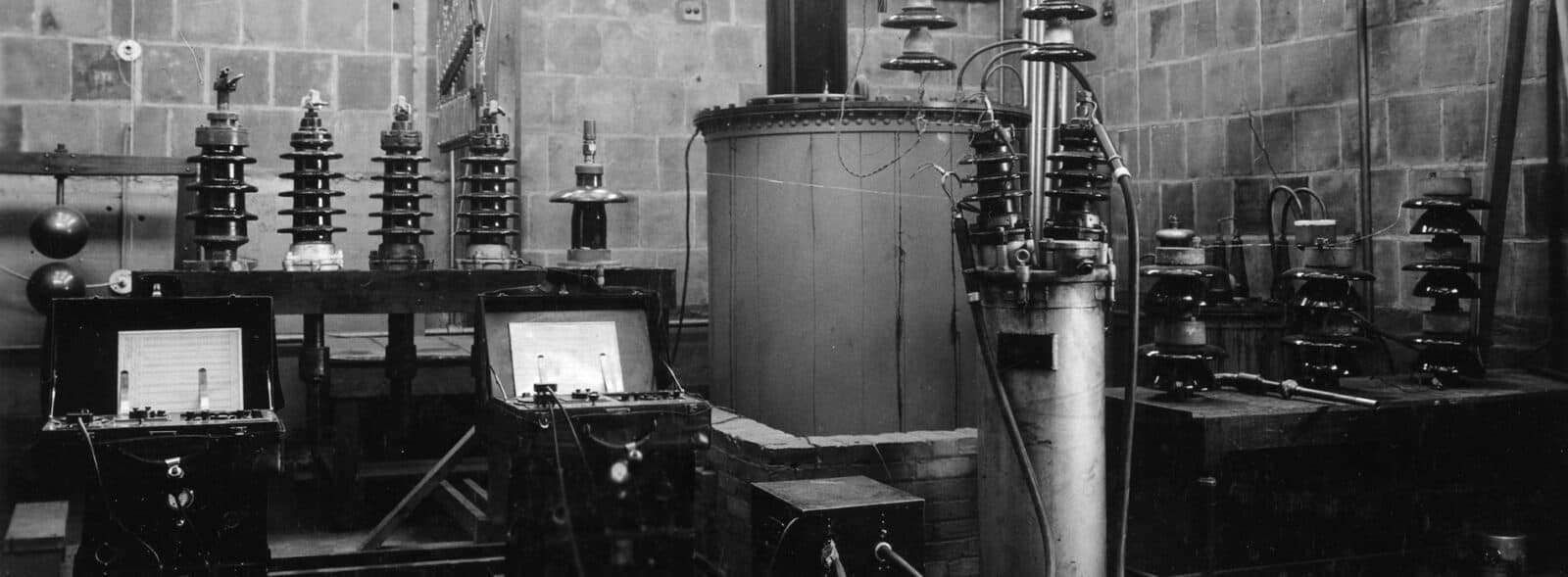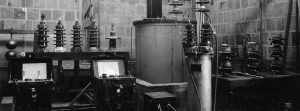100 Years of Doble: A Quick History of Power Factor Testing of Power Transformers
The most common cause of transformer failure is a breakdown in the dielectric system. As a transformer and its accessories move through the thermal cycle, high temperatures combined with moisture, oxygen and other contaminants, are the catalyst for the gradual degradation of the dielectric system. This process is accelerated if a transformer is frequently overloaded.
To reduce the likelihood of failure, periodic maintenance testing is recommended to indicate whether the insulation is deteriorating, and how quickly. Enter power factor testing on transformers, the field application perfected by Doble Engineering Company.
Significance of the power factor test
Obtaining the power factor value requires both the magnitude and angle of the current resulting from a voltage being applied across the dielectric. Having the current represented as vector allows for the extraction of the real and quadrature components. Fundamentally, the tests are used to assess the AC characteristic of the dielectric; one such value is dielectric losses, the real component of the current, which relates to contamination and/ or deterioration of dielectric.
Prior to power factor testing becoming a standard test procedure in our industry, bushings were the weakest component in the transmission system, frequently failing without warning, resulting in the removal of the associated apparatus from service. This caused considerable downtime and operating costs for utilities and customers alike. Bushing failures still occur today and based on Doble’s most recent statistics, when the cause of a transformer failure is identified, about 20% are the result of bushing failure, which represents 14% of all failures.1 This statistic also highlights the value of power factor testing for accessories, including bushing.
While this failure rate is still a challenge today, power factor testing has greatly reduced the risk of failures and improved reliability.
Power factor tests on transformers uncover the insulation condition of the windings, barriers, bushings and oil. There is sufficient historical data that indicates a dielectric system for a mineral oil-filled power transformer with a power factor of 0.5% or less is considered in good condition. These findings help utilities determine the overall health of the transformer and schedule maintenance or replacement windows before a catastrophic failure takes place.
Power factor testing today
No transformer, no matter how new, is infallible. Regular power factor tests on transformers of all ages and operation histories are important for keeping the electricity flowing and avoiding costly outages. The ability of Doble to perfect this capability so that accurate and repeatable measurements are available in a substation environment is something we are proud of to this day. Power factor testing is an important tool that power engineers have relied upon for over 100 years.
Today, our M4100 is the industry’s leading standard for power apparatus and insulation testing. Its unique set of test capabilities and AI-enabled analysis software makes it the industry’s most trusted Power Factor/Tan-Delta instrument on the market.
The first 100 years of Doble brought many remarkable innovations and power factor testing ranks chief among them.
Please visit our blog frequently and read about the people and technology that powered Doble through its first 100 years of service.
Learn more about how Doble can help you with all of your testing needs.











